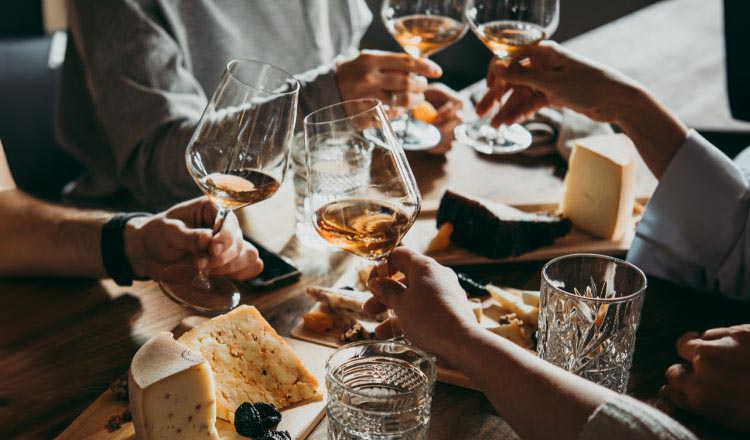Many of us have an innate belief that wine and cheese were made for each other. Not to disavow you of that belief, but dry wines can often clash with rich cheeses, and red wine is more often the culprit than white! Here, though, are a few simple ground rules for serving wine with cheese:
- Sweeter is safer: Dessert wines are much easier to match with cheese than bone-dry examples. One of the best uses of dessert wine, which often doesn’t go well with dessert, is serving it with cheese! Remember also that most famous blue cheeses have an equally famous sweet-wine counterpart, like Sauternes with Roquefort.
- Whiter means lighter: Whiter cheeses are younger and less intense than darker cheeses that have aged longer. Cheeses that are lighter in color have more water, less body, and tend to be delicate. Serve a more delicate, lighter wine with them.
- Grows together, goes together: This motto is especially true for old-world cheeses. Don’t forget that there is often a wine produced in the same region as the cheese, so try them together! Notable examples include Roquefort with Sauternes and Crottin de Chavignol with Sancerre.
- Don’t forget that beer can be a slam dunk with some cheeses, especially those from regions that are more beer-centric. For example, the Trappist monks who produce Chimay beer in Belgium also make cheese. Makes sense to us!
Whatever you do, be adventurous, try new cheeses, and never forget that one of the most impressive things you can do for your guests is to give them a great cheese course—it will be the easiest part of your entertaining, as unwrapping the cheese is the most difficult preparation technique required.


